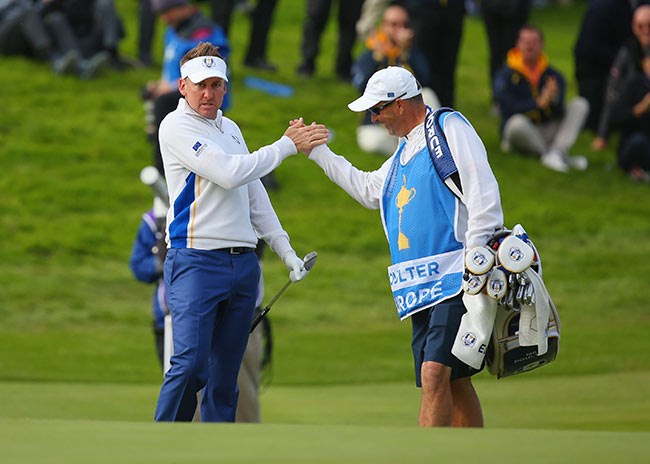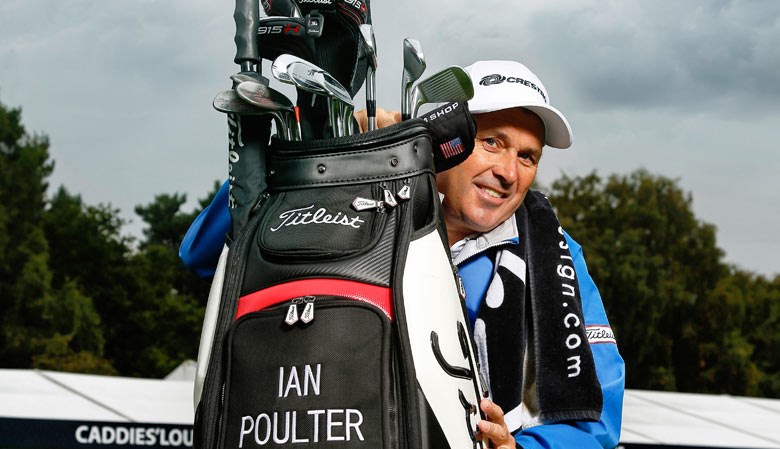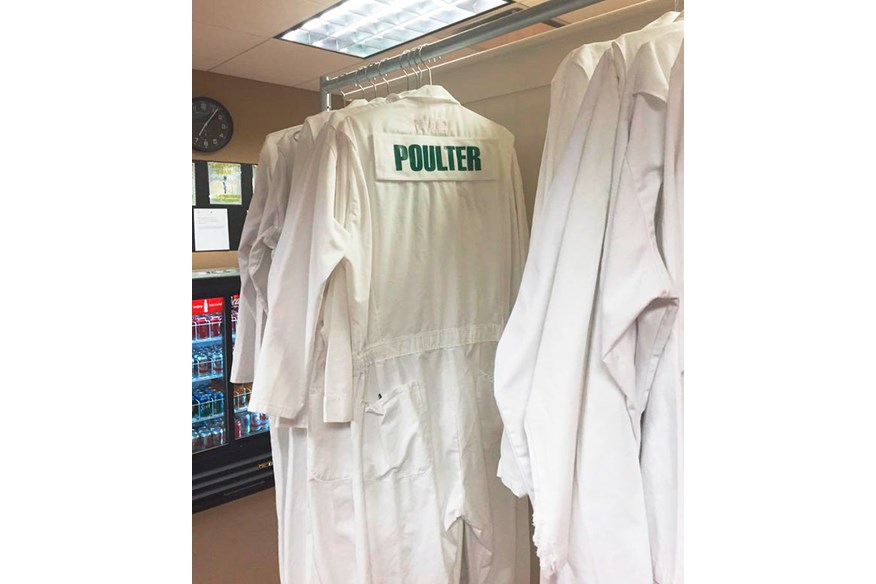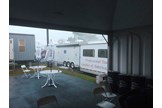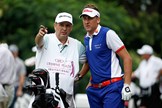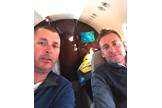What is life really like for a tour golf caddie?
Last updated:
In the past, anyone with two shoulders and the ability to grunt, “Aye, a seven’ll get there” could be a caddie. But things have changed. The role of caddie is now a highly technical, respected, and, in some cases, well remunerated one. In a world where one shot can cost you hundreds of thousands, the top professionals acknowledge that golf is a two-man game, and having the right man on the bag can be the difference between a missed cut and a tournament win.
“The top-100 players have fairly high demands about what they want from their caddie,” says Ian Poulter. “Terry [Mundy] is part of the new breed of caddie. He adopts the same attitude to professionalism that I do. We think the same way about the game. He follows the same thought processes as me and has the same work ethic. The more he knows about a course, the more he can step in and be confident enough to say if he thinks I might be about to do the wrong thing. He is absolutely not a ‘yes man’. He has a strong character and is not afraid to voice an opinion. We have become good mates. I almost spend more time with him than I do my wife!”
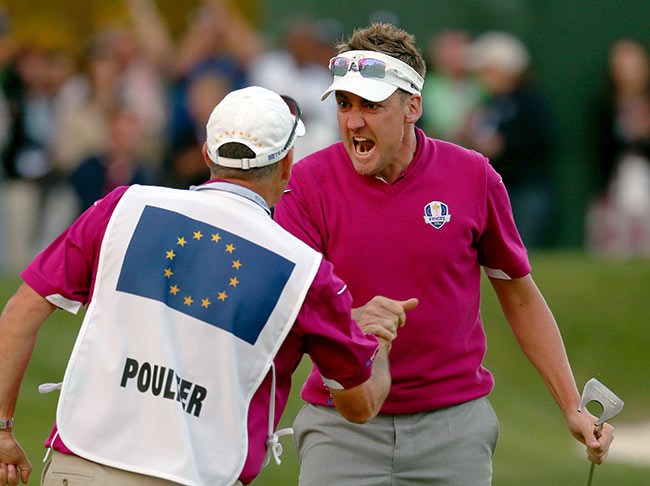
Having chopped and changed caddies during his first few years on Tour, Poulter has found his man in Terry Mundy and stuck with him. This season will be their 10th together, so it seems the perfect time to sit down with the 48-year-old and find out what life is like on the other side of the bag. Unlike occasionally tight-lipped Tour Pros, Mundy was happy to talk about the preparation that goes into a tournament, how you can save shots with better strategy, and what happens when he makes a mistake…
How did you get into caddying?
I’ve been caddying since 1989. I used to work as a printer and I lived in Bletchley, down the road from Woburn. I used to drink in a pub in Brickhill and over the years I got to know a few players and caddies. Alicia Dibos turned up for The Ford Ladies Classic one year without a caddie, so I said I’d do it. I was a half-decent golfer, so I understood the game. I did that for a couple of years, just doing the odd week here and there, and then redundancies came up at the printing firm. My plan was to take redundancy, have a bit of fun travelling around Europe caddying for six months, and then get back into printing.
What changed?
I got a little bit of success quite early. In my third or fourth tournament, we finished second and I picked up a nice cheque. I thought, ‘Hang on, if I get a good player and do that regularly, I could earn more at this than I do printing’. I got a couple of decent results early on, and then got offered a job with Alison Nicholas, who was one of the top players on the Ladies’ Tour at the time. The results were even better with her, and so were the cheques. I worked for Trish Johnson, Laura Davies and a few other female golfers, did a bit of work on the European Tour with Jonathan Lomas and Ignacio Garrido, and then hooked up with Ian.
How good a golfer were you? Do you still play?
I played off three. I was never good enough to consider playing the game for a living, but I played in club scratch teams and stuff like that. I play to about six or seven now, but most of that is just because I know how to get it around. I probably play twice a year. When you do this for a living, day-in day-out on a golf course, the last thing you want to do on a day off is set foot on a golf course.
What preparation do you do before a tournament starts?
If it’s a course we know like the backs of our hands, I won’t need to do much. I might have five or 10 years worth of yardage books filled with notes, so unless the course has changed, I know it pretty well.
And if it’s a course you haven’t been to?
Then it’s quite hard work. Nowadays, we’re fortunate enough to get yardage books professionally made for us. When I first started, we were using the old council wheel to measure yardages, so you’d be out on the course for 10 hours on a Monday. But the yardage book is still just a book of numbers; you’ve got to go out there and put the extra info in that book. And the books are great if you’re hitting it down the middle of every fairway, but you go offline and they still want a number.
You go out on a Monday and plot. I make sure I’m prepared for anything he might ask me. I try to have too much information. He might never need the extra numbers that I’ve noted down, but if he does, they have to be there and ready to go.
What kind of things are you looking out for?
I’ll check the length of rough. Sometimes the rough on one side of the fairway is much worse than on the other side. I’ll check whether the course is firm or soft so I know where we’re looking to land it and how much run-out we’re going to get. I might stand on a certain tee and think, ‘Oh, he’s not going to like this tee shot,’ so then I will spend a bit of time on that particular hole and work out a strategy that will make him more comfortable. I might think, ‘Can we hit 3-wood, because he’s not going to like driver here?’ I make a plan for the hole so when we get to it I’ve got an idea of how we should play it. We’ll talk about it and he’ll either agree or he might say, ‘No, I don’t want to be that far back; let’s just take this shot on.’ I have to make sure that by Wednesday night I’ve got a plan for every eventuality.
Is there a risk of putting negative thoughts into his head by highlighting the dangers?
The skill is how you convey the information to the player. You don’t want to frighten them. You don’t want to say, ‘If you go left here, you’re dead,’ even if that is the case. You have to turn a negative into a positive. You say, ‘We really need to be on the line of that TV tower; then we’ll be short-right of this pin, and that’s going to give you the best putt’. You’re telling them to be short-right, without making them think about how bad it would be to go long-left.
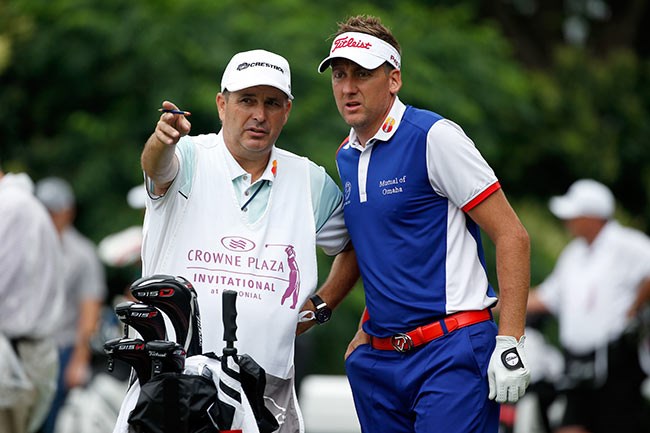
How do you decide between aggressive and safe plays?
Golf has changed a lot. It’s not played how Faldo used to play anymore. He was a placer of the ball; he’d hit 2-irons off tees and didn’t mind if it left a 6-iron in. The attitude has changed in line with the equipment. Balls don’t curve as much as they used to, so players are very aggressive these days. All the time, we’re looking for the most aggressive play, but still, as caddies, we’ve got to think, ‘What happens if that goes wrong?’ We caddies hold the negative thoughts in our heads so they don’t have to. If we make a mistake, I’ll mark it down so we never make the same one again, even five years down the line at the same course.
And what happens if you do make a mistake?
These top players have got no qualms telling you if you make a mistake during the tournament. They’ll say, ‘Why are we doing that? Your job is to make sure we’re not there, and now look where we are. You f***ed up.’ That’s fair enough, because it’s your job. Hopefully that doesn’t happen very often.
Some guys will go mental about it and keep it going for four or five holes, but Ian’s not like that. He’ll let me know about it, but by the time we get to the next shot, we’re back in the system. He’s good at getting on with it, whereas some players will be moaning on the 8th hole about that club they got on the 3rd.
What happens if you disagree on a club to hit?
Most of the time he will listen to what I say and trust in it, but ultimately he’s the player and the buck stops with him. He has to do what he wants; if he’s wrong he’ll take it on the chin.
Is there anything else that helps you prepare?
You can learn a hell of a lot when golf’s televised. Especially at a tournament like The Open, if we’re not teeing off until the afternoon, I’ll be in front of the television at 8am with my yardage book open. That might enable me to say to him, ‘This putt you’ve got here, everybody has missed it low’. That could be the difference between him holing it or missing it. Most tournaments are won by one shot, so you’re looking for that one shot that might just be the one that does it.
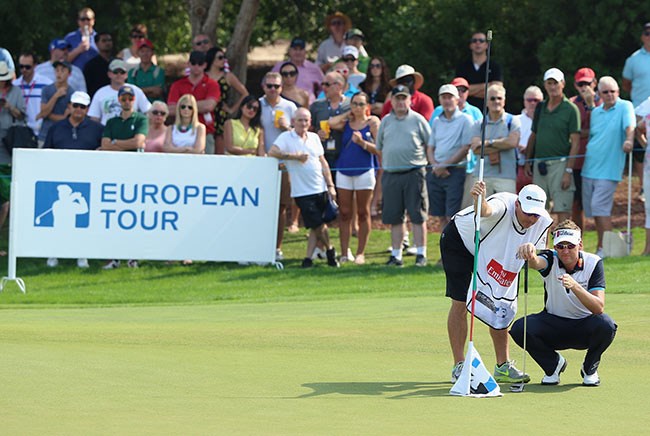
How often does he ask you to read a putt?
He’s pretty confident in his own judgment. Sometimes he’ll ask me twice in a round, sometimes it might only be twice in a week. The problem with that, of course, is that whenever you do get called in, you know it’s going to be a difficult read. The reason you’ve been called in is because he can’t find the break, or he can’t make his mind up. Sometimes they just want another pair of eyes to back up what they’re seeing, but you’ve got to make the call. If you see it differently, you can’t just agree. You’ve got to say, ‘No, I don’t see that. If I was hitting this putt, I’d be aiming out there.’ You offer your advice and it’s up to them whether or not they take it.
How many shots can you save him?
It’s impossible to measure. You make a certain decision and you’ll never know what would have happened if you had gone the other way. Say you’re deciding whether to try to cut one round a tree or chip out sideways. If you chip out and make bogey, you don’t know whether you’ve cost a shot or saved one. If they took the shot on, they might have stuck it on the green and made par, so by chipping out you’ve cost him a shot. But, had it rattled around in the trees, they might have made seven, so you’ve saved him two. You can only make a call on the percentages.
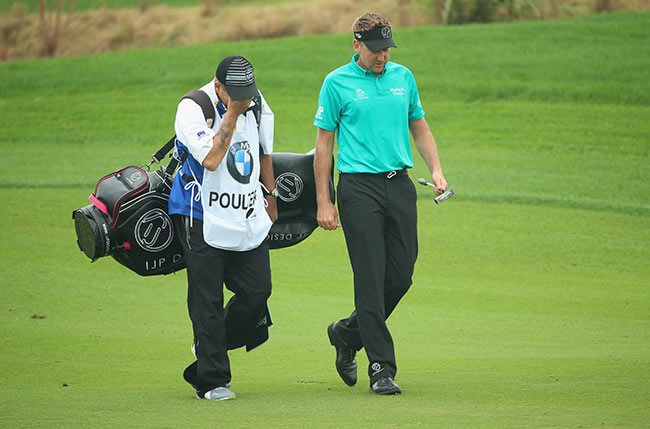
How physically demanding is your job?
It can be tough, especially when the weather isn’t great. Once you get Ian’s waterproofs in the bag, my waterproofs, an umbrella, a couple of spare towels for the grips, plus all the usual bits, suddenly the bag weighs 45 pounds and you’ve got to carry it six miles. If you’re playing a particularly hilly course, like Augusta or some of the mountain courses in Asia, it can be really tough. The other problem is extreme heat. We go to Malaysia and it’s so hot it’s hard just to walk, let alone with a bag on your back.
What do you think of the treatment caddies receive on the PGA and European Tour?
It varies, but I don’t think it’s good enough. It’s got better over the years, but I think there’s a very old stigma attached to the job from way back when there wasn’t really any money in the job and some undesirable characters who couldn’t hold down full-time jobs picked up bags. The tours were thinking, ‘Right, we don’t want these guys here, there and everywhere’. I feel both tours have not moved on enough.
Caddies now do a very professional job, take the job very seriously, and a lot of them are earning quite good money. They can afford to eat well, travel well, and stay well, and sometimes you go to a tournament and most of the caddies would say they’re not treated as well as they should be. At some events there is a certain grade of food that’s supplied to players, and a very different grade of food supplied to caddies. Of an evening, we eat the same as the players and go to dinner with them. We don’t want to eat doughnuts and hamburgers at the tournament. Change is still needed, but it’s moving in the right direction.
There was quite a stir at The Honda Classic when caddies weren’t allowed in the clubhouse during a thunderstorm…
That’s a big problem. I was there that week and there was just no protection provided for caddies. A pretty bad storm came in and the rule was that everybody is allowed in the clubhouse – unless you’re a caddie. The public can come in, the players can come in, players’ families, players’ long-lost second cousin’s mates can come in, but if you’re caddying in the tournament, you stay away. The only thing that was supplied for caddies was an outdoor metal frame with a canopy – during a lightning storm. A few of us voiced our opinion.
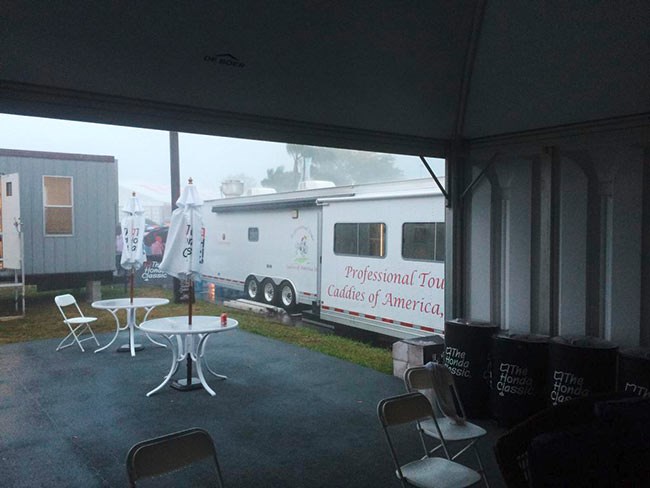
How much can a caddie earn in a year?
It’s all down to what the player earns on the golf course. If you’ve got a standard percentage deal with a player and he goes and earns three, four, five, ten million in a year, it’s quite easy to work out what that caddie has earnt gross. But there are no guarantees.
When a player goes to a tournament and misses a cut, he hasn’t earned nothing; he’s actually earned a minus because he still had to travel there and pay for accommodation. It’s the same with us. There are occasions where you go, ‘Blimey, I went to work this week, worked all week and it cost me money’. That’s the gamble you take.
You look at what you earn over the course of a year and if that’s working, the business is working. If it’s not, you do something about it. Nobody can go to work for a year and lose money. I’m sure if you spoke to Jordan Spieth’s caddie this year, he’ll tell you he’s had a very nice year. Talk to another guy whose player has struggled, and he has not had a very good year at all. But it’s an investment. Basically caddies are investing in the player and you just hope it pays off. The good thing nowadays is that if you do well in a tournament, you are paid properly. Everyone is waiting for that one win, that one big week or one big year.
If things aren’t going well, how long is it until you have to consider going elsewhere?
Everybody’s got families and mortgages and all the rest of it. If you’re working for somebody and the money’s not coming in anymore, you’ve got to do what you need to do.
I’ve not had to think about that, not to date. I truly believe that when you’re working with someone like Ian, even when he is struggling, it’s just a temporary thing. I’m always confident that it will be fixed soon and we’ll be off and running again. It would have to be a season or two of bad form before I really started to get concerned.
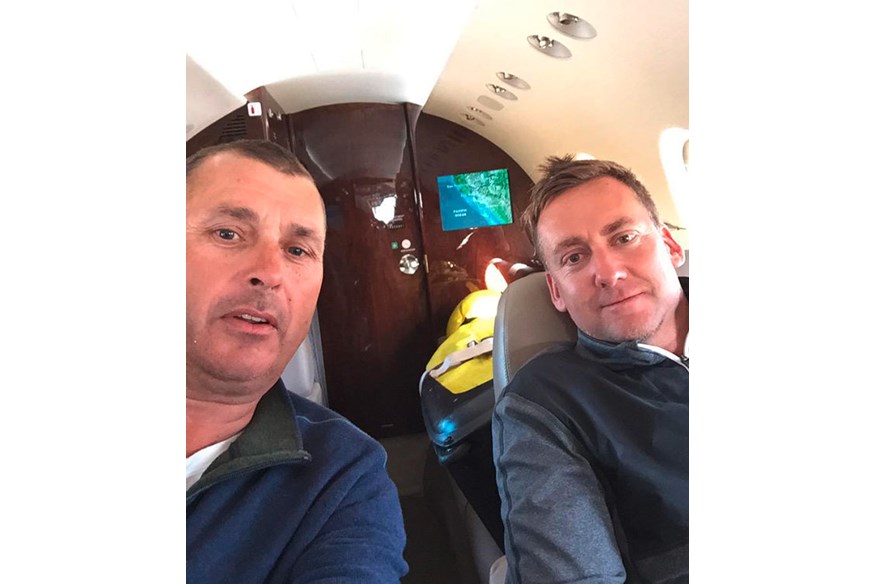
Are there certain players you’re glad you don’t caddie for?
Yes, but I’m not going to say who they are! There are certain jobs on Tour that you think, ‘I would have to be really struggling to take that job, because that guy is extremely hard to work with’. I’m sure most people reading this can work out who they are.
Do you get nervous on the course?
I’ve done it for so many years, I don’t get nervous anymore. When you’re coming down the stretch on a Sunday with a one-shot lead, that’s a real thrill, and you can certainly feel the juices flowing. The player does as well, and suddenly he’s hitting every iron six yards further, so you have to be alert to that and make decisions accordingly.
What advice would you give to amateurs?
We play a pro-am every Wednesday and you see the same mistakes over and over again. Most of the time it’s choosing the wrong shot. Most 10-handicappers are happy to take on a shot that most Tour Professionals wouldn’t take on. If a top Tour Pro would consider not taking on that shot, then I’m pretty sure a 10-handicapper shouldn’t be doing it.
I use a 10-ball rule. If you had 10 golf balls, how many would you get on the green from here? If the answer is three, then you shouldn’t be going for it. If the answer is seven or eight, then you should.
Obviously the Tour Pro has a lot more to lose. If the shot doesn’t come off for him, it costs him thousands. If the shot doesn’t come off for the amateur, it doesn’t matter. He’s had a terrible round, he goes and has a beer with his mates, and then he goes back to work the next day. If he was playing for his livelihood, he’d make very different decisions. That’s why it’s easy for them to save shots – just by better decision-making.
